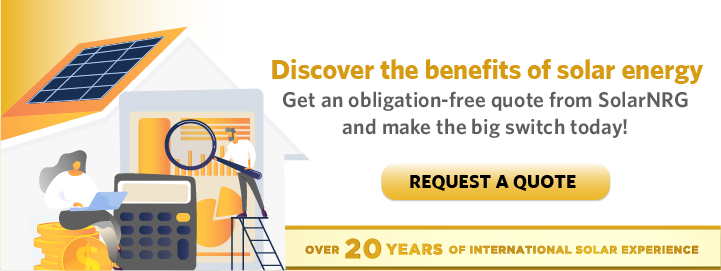In the Philippines, tapping into solar energy is a sustainable and strategic choice. Research shows that replacing diesel generators with solar can save the country over ₱11 billion yearly ($200 million).
This shift is crucial, especially for small islands heavily reliant on diesel for power but still face frequent blackouts and instability. Off-grid solar solutions offer a promising way forward, ensuring reliable energy without failure.
As demand for clean energy grows, understanding industrial solar panels is crucial in driving this transition. In this blog, we’ll explore how solar technology can brighten the future of energy in the Philippines and what types of panels you can use to empower your organization more sustainably.
7 Types of Industrial Solar Panels and Their Best Applications
Utilizing solar energy is a major decision that involves careful consideration of the right panels for your organization’s needs and goals. Here are the best solar panels for industrial use to consider.
1. Monocrystalline
This type of industrial solar panel is made from a single high-purity silicon ingot and has a pyramid pattern, helping it capture more solar energy effectively. It lasts for up to 30 years and can withstand extreme weather conditions. Its sleek design makes it the ideal choice for limited-space installations.
Industries requiring maximum energy output per square meter, such as urban manufacturing facilities or rooftop installations on commercial buildings, can benefit from monocrystalline panels.
For instance, a pharmaceutical plant in a densely populated city can optimize its rooftop space with monocrystalline panels to generate ample clean energy while minimizing its environmental footprint.
2. Polycrystalline
Unlike monocrystalline solar panels, multiple silicon fragments comprise polycrystalline. Due to its inexpensive and faster production process, this panel option is a cost-effective alternative to monocrystalline panels with slightly lower efficiency.
While moderately less powerful than the first panel on this list, polycrystalline can still accommodate large-scale industrial applications where cost-efficiency is paramount, such as solar farms or industrial parks.
Let’s say you’re a manufacturing plant in an industrial park. You can install polycrystalline panels across vast open spaces to harness solar energy cost-effectively, reducing your reliance on grid power and operational expenses.
3. Thin-film
Thin-film solar panels are lightweight and flexible, which are ideal for curved surfaces or installations on weak roofs. They’re also affordable, similar to polycrystalline solar panels because they’re easy to produce and require less material.
Some may view thin film’s decreased efficiency, shorter lifespan, and limited warranty as a drawback. Nonetheless, these solar panels can generate significant power in large-scale applications, such as construction sites or infrastructures that require portable or adaptable energy sources.
4. Passive emitter and rear cell (PERC)
An advancement on monocrystalline panels, PERC panels have a light-trapping rear layer that boosts efficiency by 12%. They also reduce rear recombination and prevent heat buildup. The advantage of this panel is that you only need a few to produce the same energy as conventional ones.
These high-performing panels are ideal for industries with high energy demands, like data centers, where maximizing power generation and reducing reliance on the grid is crucial.
5. Cadmium telluride
Cadmium telluride or CdTe-based solar panels are thin-film panel variants that offer high efficiency at low cost. They use less water during production, which is good for the environment. It also pays back energy quickly, generating a smaller carbon footprint.
Since they’re thin and flexible, CdTe-based solar panels are the best choice for businesses with ample space. Moreover, you can utilize them in projects that involve aircraft and space-related endeavors since planes, rockets, and satellites are specialized structures.
6. Amorphous silicon
You can immediately benefit from amorphous silicon or a-Si solar panels for small-scale solar projects. Another type of thin-film solar technology, these panels are not only affordable but are also incredibly adaptable to any surface.
However, they have low efficiency and a shorter lifespan. Therefore, you can use them for less-intensive purposes like powering outdoor lights, portable devices, watches, calculators, or structures with minimal energy requirements. To match the output of traditional solar panels, you’d need more roof space to install many a-Si solar panels.
7. Bifacial
A recent innovation, bifacial panels have a light-capturing layer on both sides, generating electricity from direct and reflected sunlight. This feature means they produce more energy over reflective surfaces like stone or snow. However, they’re not as effective on rooftops with less space for reflected light.
Despite slight deficiencies, industrial bifacial solar panels work well in big projects. For instance, you can use bifacial solar panels if you manage a food processing plant since you need significant amounts of electricity to operate efficiently and maintain food safety standards.
Go Down the Sustainable Path with Industrial Solar Panels
Industrial solar panels offer diverse options to meet the substantial energy needs of various sectors. Whether you’re operating a manufacturing plant, managing a commercial facility, or exploring renewable energy solutions, more often than not, there is a solar panel available that’s sure to meet your specific requirements.
From the cost-effectiveness of CdTe panels to the versatility of bifacial technology, the possibilities are endless. So, get ready to embrace the power of solar energy for industrial use to drive efficiency, reduce costs, and promote a greener future.
Ready to take the next step toward sustainability? Contact us at SolarNRG to explore our renewable energy solutions.

Recent Comments